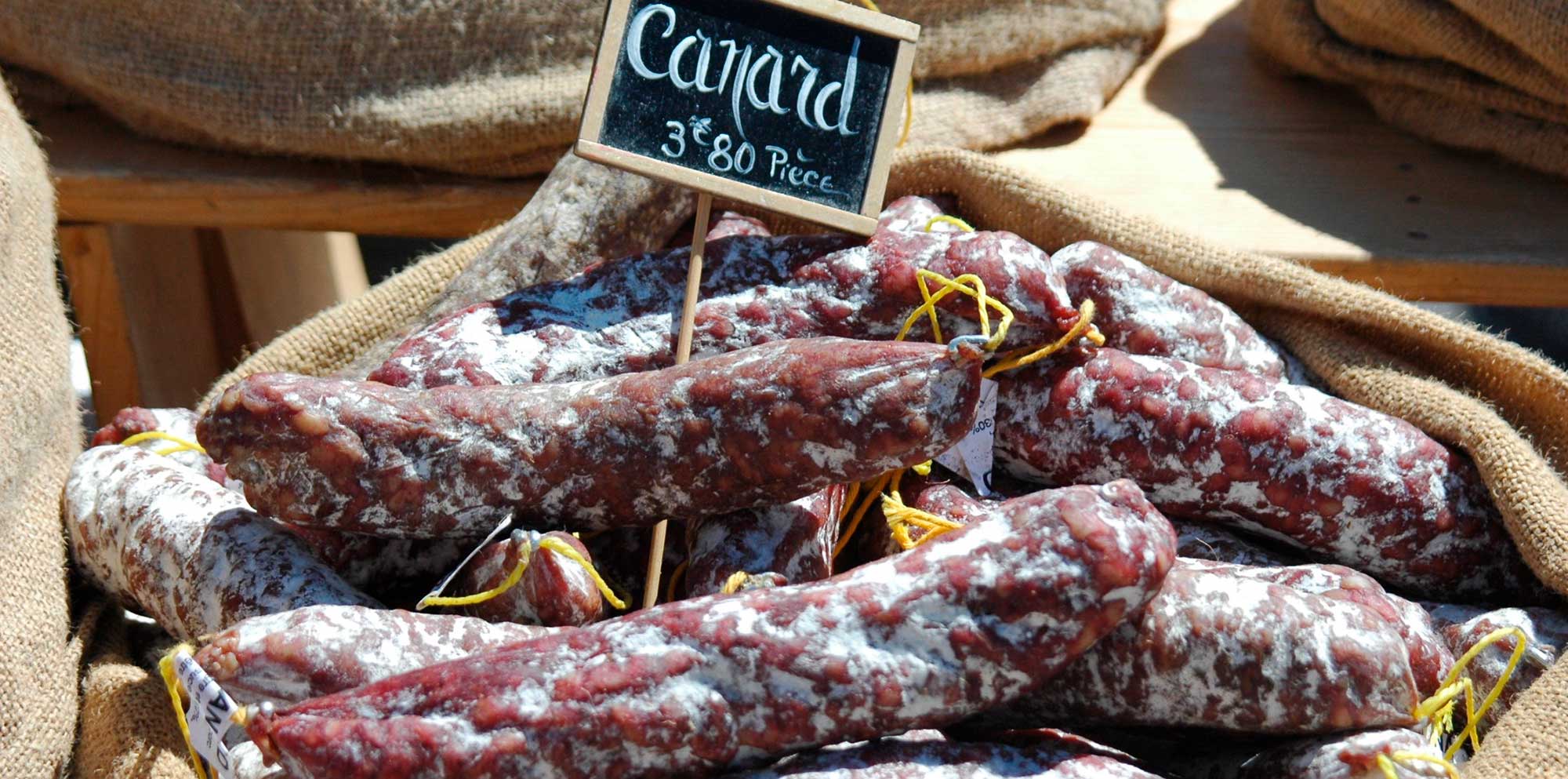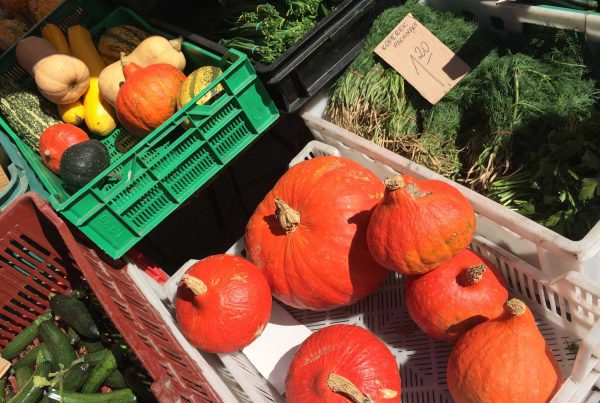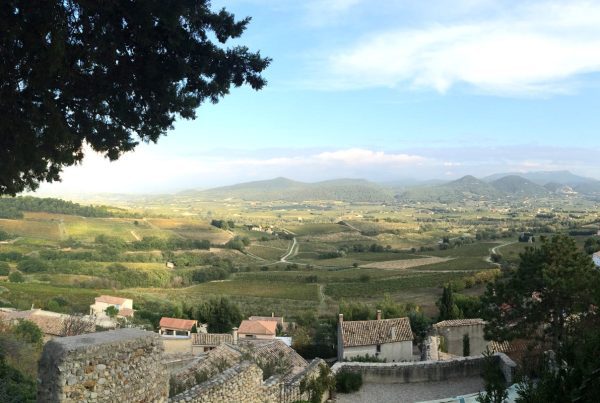Dry-curing is simply preserving meat by using salt. Traditional dry-cured sausages – the rough-textured, chewy ones like French saucisson sec – aren’t cooked. Instead, the raw meat is stuffed into natural casings and left exposed to the air, picking up wild yeasts and cultures that start fermentation. As saucissons age, natural, healthy molds develop on the casings that prevent bad bacteria from contaminating the meat.
Like wine and cheese, the sausages are aged in a cool, humid place to develop the rounded, savoury taste that comes from slow ripening. White mold grows on the outside; water drips out as the sausage dries.
French charcuterie has always been shaped by regional variety, which contributes to its vast inventory. Each region uses its geographic strengths and uses the wealth of ingredients that are readily available in that particular area.
In Alsace, saucisson is traditionally spiced with clove, allspice, cinnamon, and nutmeg, making a deeply savoury and satisfying wintry salame. In Arles, where it is at its purest, you’ll find it made with just pork and salt. Meanwhile, eastern France, near the Swiss Alps, is famed for its saucisson aux noisettes, a salame made with pork, salt, and whole hazelnuts from Savoy.
The full list of French charcuterie items is long and not at all lean, but there are a few that experts consider classics. So let’s open a bottle of wine, break into some fresh bread, and dig in.





